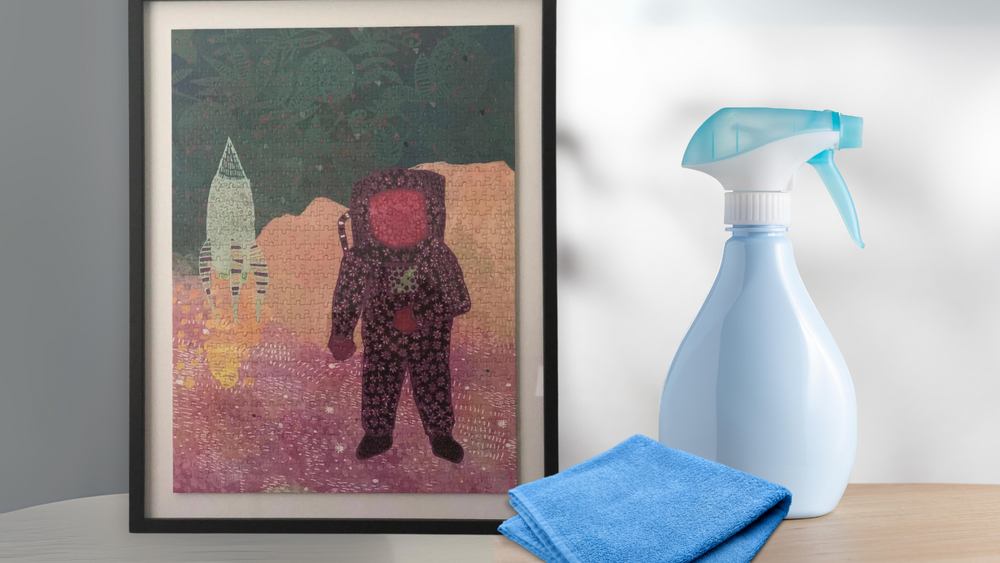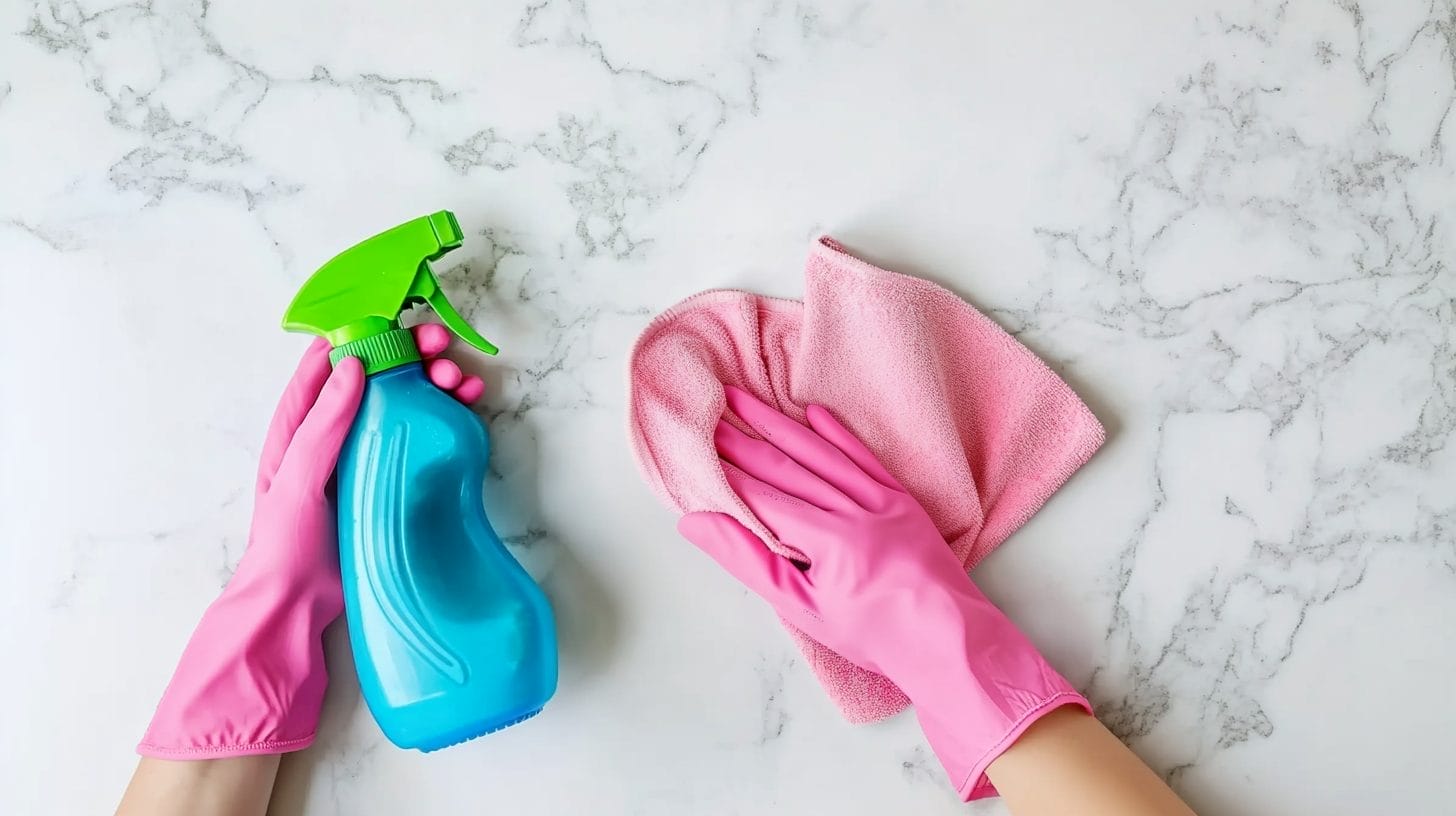
Wooden puzzles are not only cherished toys but also timeless pieces that can enhance a child's cognitive skills and creativity. However, with frequent use, they can accumulate dirt, dust, and grime, diminishing their charm and playability. Maintaining the cleanliness of these puzzles is essential for ensuring their longevity and safety.
In this article, we’ll explore effective and safe methods for cleaning wooden puzzles. These methods will help you preserve their beauty while keeping them hygienic for little hands. Let’s dive into the best practices for keeping these treasured items in top condition!
Key Takeaways
- Use a soft paintbrush to dislodge crevice dust and follow up with a dry cloth.
- Clean each piece with a damp cloth using a vinegar-water solution, then dry immediately.
- Treat stubborn stains with a diluted vinegar solution, gently scrubbing and ensuring thorough drying.
- Rinse carefully with a damp cloth to remove soap residue, avoiding soaking the wood.
- Dry puzzles in a well-ventilated area, avoiding direct sunlight, to prevent moisture retention.
Preparation for Cleaning Wooden Puzzles
Start by gathering all the necessary cleaning supplies, like a soft cloth, mild soap, and a diluted vinegar solution.
Next, inspect the puzzle for visible dirt or stains, noting which areas need extra attention.
Ensure your cleaning area is dry, and set aside any loose pieces to make the process easier.
Gather Necessary Cleaning Supplies
Before diving into the cleaning process, ensure you have all the necessary supplies.
Gather a soft cloth, a nontoxic cleaner like mild soap, and a spray bottle for white vinegar or apple cider vinegar cleaning solutions. Vinegar is a great natural disinfectant. For added protection, consider using an antibacterial solution.
Wood is a safe, natural, and durable material but also porous. Unlike plastic toys, wood toys possess natural antibacterial properties, so you don't need to use harsh chemicals.
A gentle brush or paintbrush will help dislodge dust from crevices.
Assess the Puzzle's Condition
With your cleaning supplies gathered, take a moment to assess the condition of the wooden puzzle.
Look for visible dirt and any damaged areas, such as chipped or cracked pieces.
Determine if the puzzle needs extra sanitization, especially if it's been mouthed.
Note the varnish or finish type, as this will guide your cleaning method.
Address any loose parts to ensure safe play.
How to Clean Wooden Puzzles: An Easy Guide

To start cleaning your wooden puzzles, begin by dusting and wiping down the surfaces with a damp cloth.
For spot cleaning, use a mild soap solution for any stubborn stains.
Step 1: Dusting and Surface Cleaning
Start by gently dislodging dust and debris from the wooden puzzle's surface using a soft paintbrush, ensuring no particles remain in the crevices.
Then, use a soft cloth to remove any remaining dust and give the puzzle a clean finish.
Regular dusting prevents allergens.
Step 2: Spot Cleaning
When spot-cleaning wooden puzzles, use a soft, damp cloth with warm water to gently wipe down each piece and keep it clean and disinfected.
For added cleanliness, disinfect with a water and vinegar solution and immediately dry with a soft cloth. Be careful not to soak the wood.
After cleaning, allow the puzzles to air dry completely to ensure no moisture remains.
Step 3: Treating Tough Stains
Occasionally, wooden puzzles might develop tough stains that require more than just a quick wipe.
For stubborn stains, try using a diluted vinegar solution (1:1 ratio of vinegar to water). Gently scrub the area with a soft cloth. Always test on a small spot first.
After treating, wipe with a damp cloth and let the puzzle air dry completely to avoid damage.
Step 4: Rinsing
Why's it important to rinse wooden puzzles carefully after cleaning?
Using a damp cloth ensures you remove all soap without soaking the wood. For larger puzzles, a quick dip in a rinse solution is fine, but eliminate excess moisture immediately.
Step 5: Drying
After cleaning your wooden puzzles, it's crucial to dry them immediately with an absorbent cloth to prevent moisture retention that could warp the wood.
For thorough drying, place the puzzles in a well-ventilated area and allow air drying. Make sure to avoid direct sunlight.
Check for damp spots and wipe them with a dry cloth to ensure all moisture is removed.
Step 6: Polishing (Optional)
Once your wooden puzzles are completely dry, you might want to consider polishing them for added protection and shine.
Use a small amount of food-grade mineral oil applied with a soft cloth. Gently buff in the direction of the wood grain to enhance the natural luster.
This step, after thorough cleaning, helps maintain colors and designs, protecting against moisture and dirt buildup.
Tips for Maintaining Wooden Puzzles
To keep your wooden puzzles in top shape, set up a regular cleaning schedule and store them properly.
Avoid exposing them to moisture and extreme temperatures to prevent warping and damage.
Regular Cleaning Schedule
Establishing a regular cleaning schedule for your wooden puzzles can go a long way in preserving their quality and ensuring they stay safe for children.
Clean wooden toys at least once a week using a solution of vinegar and water. Encourage children's participation in the cleaning process to maintain hygiene.
Regular inspections and promptly addressing any damage will keep puzzles in top shape.
Proper Storage Practices
Keeping your wooden puzzles in top shape starts with proper storage practices.
Use a dedicated storage container to prevent scratches and dents. Store the puzzles in a cool, dry environment to prevent warping.
Regular inspection for signs of wear ensures safety while encouraging gentle handling during play and storage extends their lifespan.
Follow these tips to keep your puzzles looking new.
Conclusion
By following these steps, you'll keep your wooden puzzles in great condition. Regular cleaning and proper storage will ensure they last for years. Don't forget to dust and spot clean routinely, avoid excess moisture, and store them in a cool, dry place.
With a little care, your puzzles will remain beautiful and functional, ready for countless hours of enjoyment. So go ahead and give your wooden puzzles the attention they deserve!
FAQs
How to Clean and Sanitize Wooden Blocks?
To clean and sanitize wooden blocks, wipe them with a damp cloth and mild soap. For deeper cleaning, use a vinegar-water solution. Ensure you dry them promptly to avoid warping, and regularly inspect for wear or damage.
What Is the Best Way to Clean a Wooden Surface?
The best way to clean a wooden surface is to use a damp cloth with warm water. For tougher grime, add a bit of mild soap. Always dry immediately to prevent damage. Regular dusting helps maintain its appearance.
How to Clean Antique Wooden Toys?
You should gently dust antique wooden toys with a soft, dry cloth. For tougher grime, use a diluted vinegar solution. Always test on a small area first and avoid soaking to prevent warping or cracking.
How to Sanitize Wooden Teethers?
To sanitize wooden teethers, mix equal parts water and white or apple cider vinegar. Use a cloth to apply the solution, then wipe it down thoroughly. Air dry completely to prevent warping. Avoid soaking or harsh chemicals.